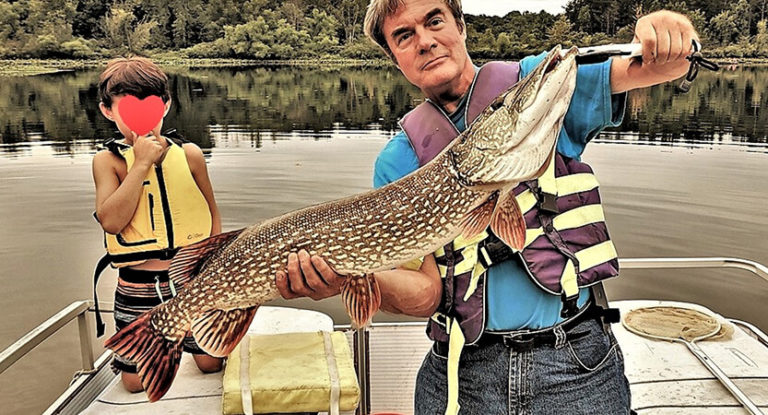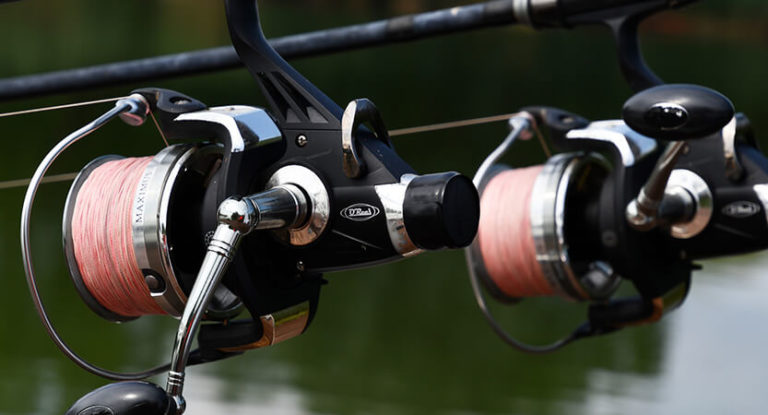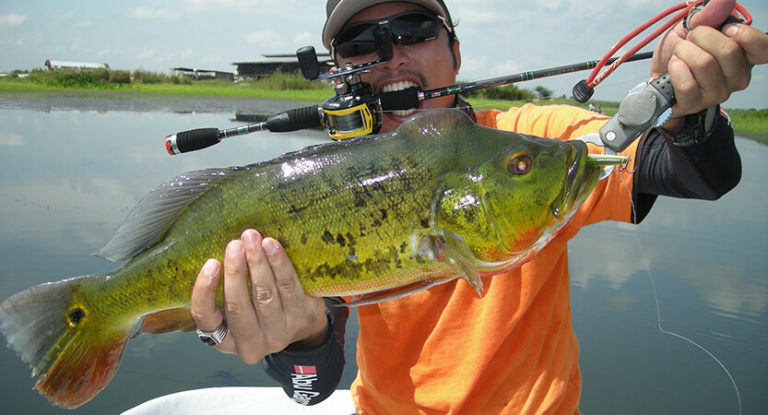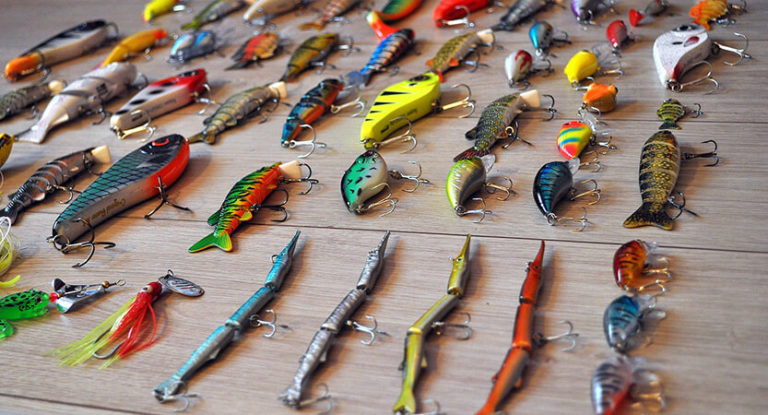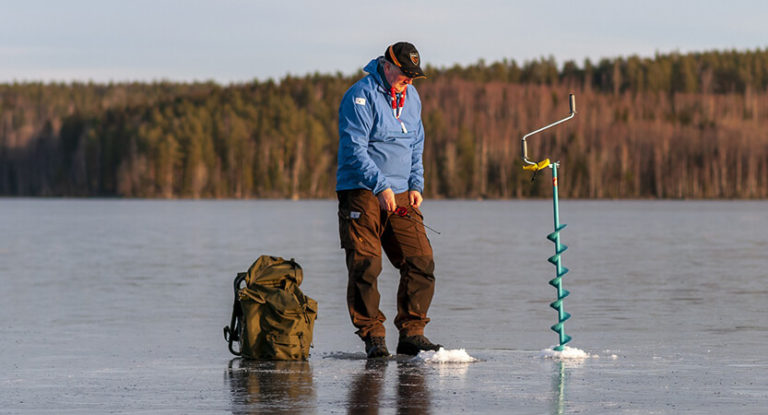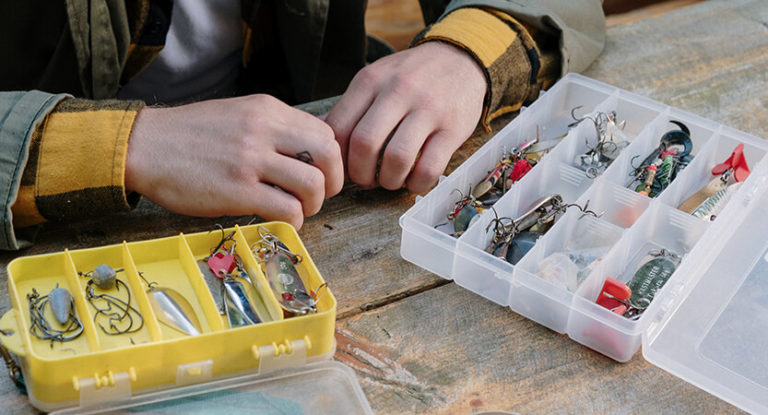Spinning fishing is one of the most respected and popular types of fishing. And this is natural: she gives a gamut of the brightest impressions from the face-to-face fight with a predator, an adrenaline rush, a lot of positive emotions. A properly equipped spinning rod and an optimally matched bait are important, but do not negate the required basic skills of the angler. It is not so difficult to master the basics of technology: you can learn how to cast a spinning rod correctly and carry out basic postings within one or two trips to the pond.
Our today’s publication is aimed primarily at beginners who are just starting to dive into the exciting world of spinning fishing. Our goal is to tell you about casting techniques practiced in various conditions. We will give you a serious theoretical base, and practice will be developed already during field trips. It is advisable that an experienced master take patronage over the beginner, but if there is none, you can bring the movements to automatism on your own.
Here is an overview of the content of this tutorial, feel free to jump to any section you care about:
For more fishing instructions, take a look at these popular Trizily links: Best Spinning Reels, Best Spinning Rods.
- How To Become A Fisherman
- How To Choose A Fishing Spot
- How Weather Affects Fishing: All You Need To Know
The importance of proper technique
Spinning fishing consists of several components: the delivery of a wobbler, spoon or silicone to the fishing area, wiring, striking, and playing. In a few hours of fishing, the spinning player makes dozens or even hundreds of casts. Each of them is a small test of endurance, accuracy and skill.
Many points depend on the correctness of the technique:
- casting distance;
- the targeting of bait delivery;
- the rate of wear of the line and the integrity of the tackle;
- avoiding snagging on the surrounding bushes and other obstacles;
- the degree of fatigue and safety of the angler.
Throwing is carried out by a sharp swing of the spinning rod in the chosen direction of the bait’s flight. At the same time, not only the hands work, but also the body of the angler, and some spinning players even take a step or two forward, especially when delivering heavy wobblers and lures over long distances. In this case, the bait hangs 20-50 cm from the “tulip” of the blank. Make sure that the bow of the line guide is open, otherwise there is a high probability of breakage of the tackle.
The spinning rod is thrown with one or two hands (depending on the class of tackle and individual preferences of the angler) with a strong backswing, without fixation at certain points of the trajectory. The line is clamped with a finger, at the end of the throwing phase, the fixation is loosened. This moment, with the wrong actions of the angler, is fraught with a reduction in the flight range of the bait, and in some cases – and serious hand injuries.
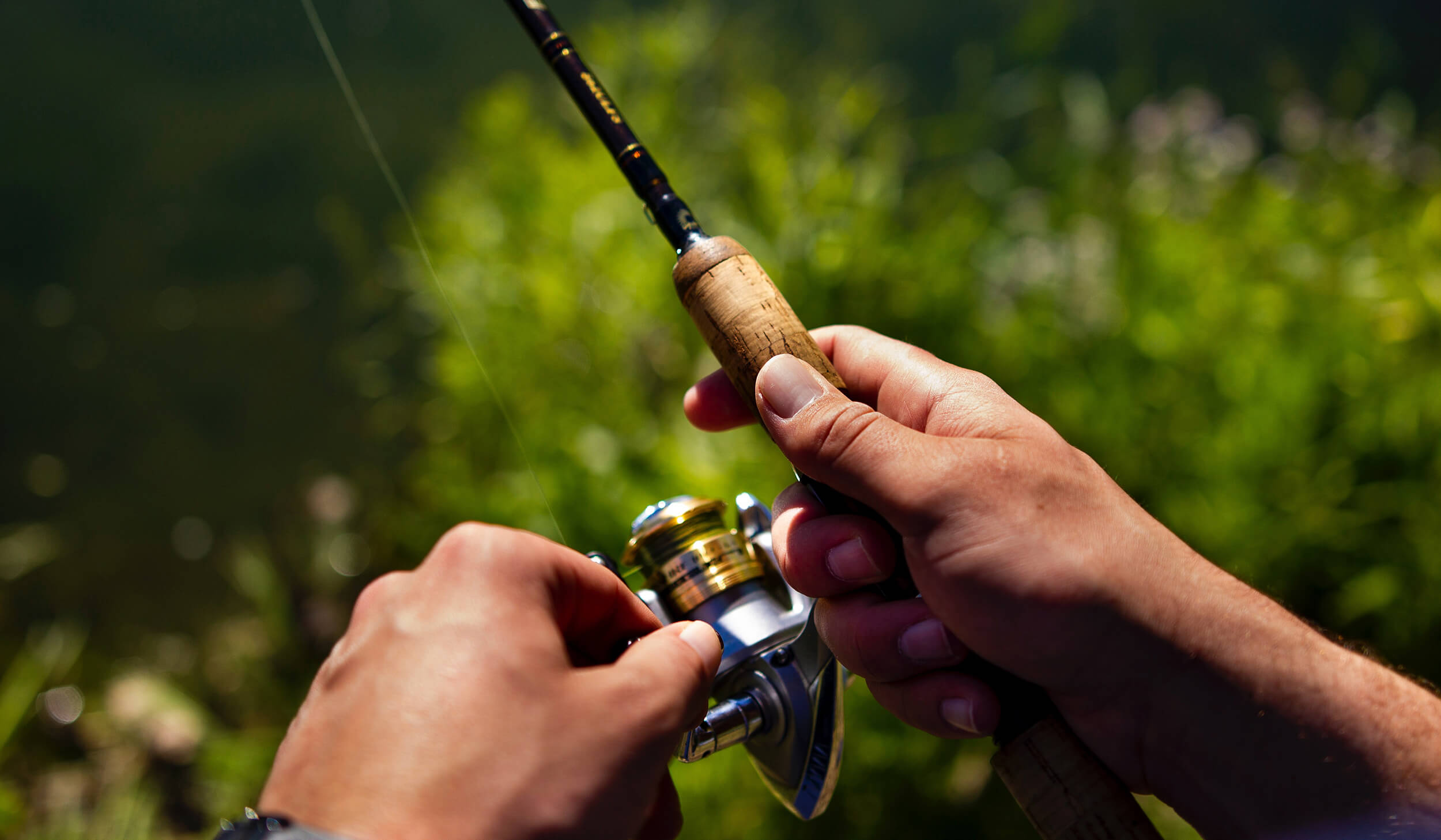
Spinning preparation
Previously, fishing with a spinning tackle was a very laborious task. The rods were equipped with classic inertial reels, and long casts, wiring, and fishing were much more difficult for anglers. “Beards” of fishing line were common even among craftsmen.
With the invention of the spinning reel, spinning fishing has moved to a qualitatively new level: the whole process has been significantly simplified. Yes, the weight of the inertia reel is usually higher than the weight of a classic reel, but with equal efforts, the angler gets a greater range and accuracy of splashdown, minimization of the load on his hands, and a reduced risk of beard formation.
We recommend choosing high-quality spinning reels, characterized by the correct laying of the line: chaotic winding negatively affects the quality of the cast. The spool should be filled with line or cord up to the edge.
The longer the spinning rod, the further it can be cast, but the more difficult it is to handle it, therefore, it is not recommended for beginners to choose too long blanks (from 2.7 m). “Slow” rods provide greater “range” than “fast” ones, but much depends on the skill of the angler. Attention should also be paid to the quality of the through-rings: they must be wide enough, located in one line, without burrs and other defects.
When choosing a fishing line, it is recommended to adhere to the characteristics of the blank specified by the manufacturer. Any overstepping of these limits negatively affects the comfort of handling the tackle, as well as its durability.
The main methods of throwing
Many seasoned fishermen, even with a strong desire, will not be able to explain exactly how they carry out casts: it is one thing to do it, another thing to describe in words. This action is brought to automatism and is controlled at the subconscious level. Moreover: the same technique when performed by different anglers looks a little different.
We will focus on the most popular techniques, but it is not necessary to master all of them at the initial stage. A beginner spinning player can focus on two main types of casting, vertical and horizontal, bring them to automatism, and then, if necessary, start mastering delights such as a pendulum or a catapult.
It is believed that rods of the light class (light and ultralight) are wielded with one hand, and heavy blanks require the use of both upper limbs. In practice, however, many anglers use both hands all the time, regardless of the rod class.
Vertical classic
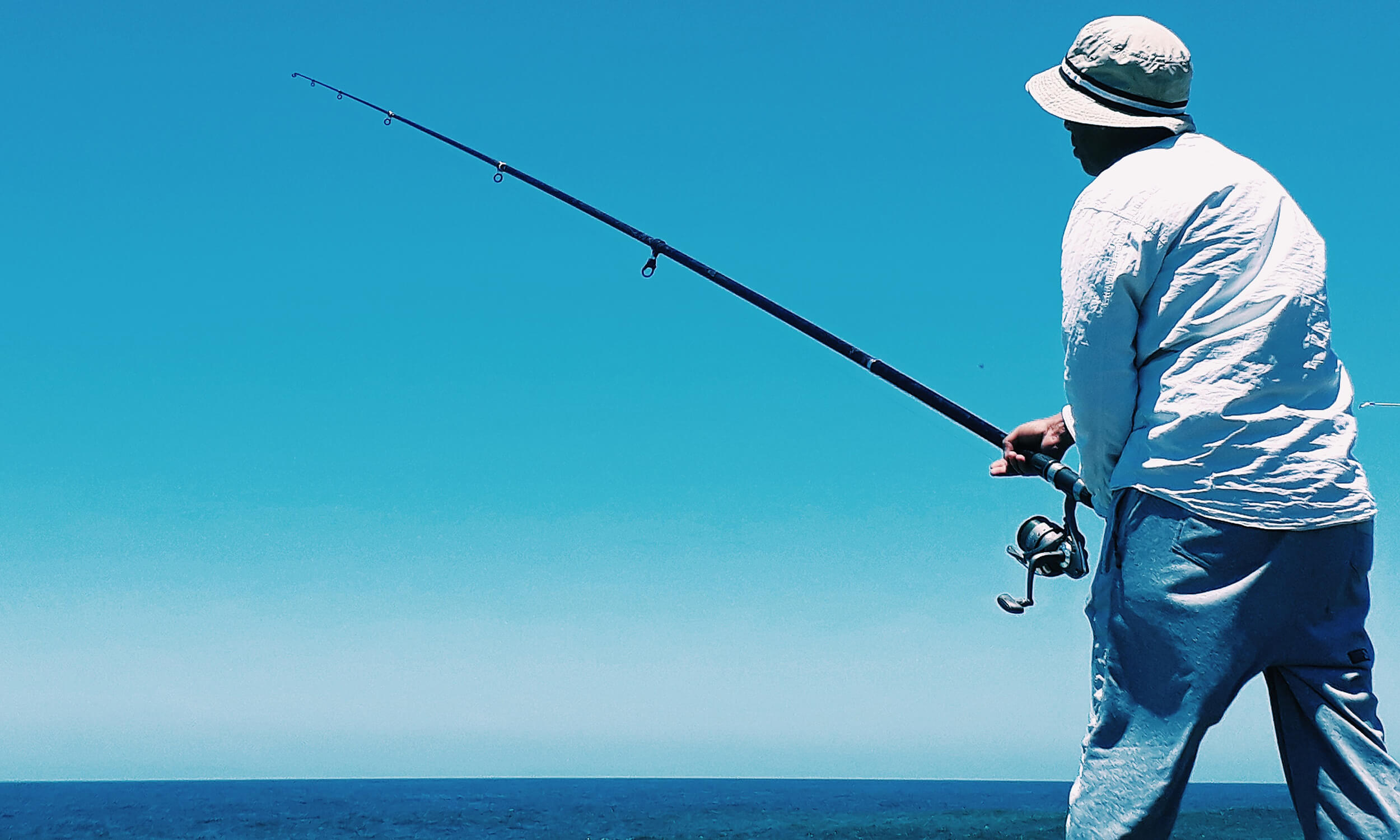
Vertical casting is considered a classic option. It is not too difficult to execute, demonstrates high accuracy and long range of bait delivery. In the absence of external obstacles, all anglers use it with minor adjustments.
Let’s describe the basic technique in as much detail as possible:
- We provide an overhang of the lure of 25-35 cm (depending on its class, distance, individual preferences of the angler).
- We open the bail of the line laying device, quickly check the quality of the winding and the absence of “beards”.
- We take the spinning rod with the working hand so that the leg of the reel seat is between the index and ring fingers.
- Use your index finger to lightly fix the fishing line. Gloves can be used in the initial stages to avoid injury.
- Visually mark the casting point on the water surface. You can choose a landmark direction on the opposite bank.
- We move the rod tip up and immediately make a sharp movement with the blank forward, while simultaneously releasing the locking index finger. The whole arm works, from the shoulder to the hand.
- After splashing down the bait, close the bow of the line laying device, carefully direct the line to the spool and select the slack formed due to the windage.
- We expect the bait to reach the bottom (or the chosen fishing horizon) and start wiring.
The main mistake when casting this type is fixing the spinning rod at the top point. The forward-downward movement should follow immediately after lifting the blank, representing a single whole with it. After casting, the rod should be held at a slight angle in relation to the direction of the line, taking into account the wind, almost horizontally.
This method is ideal when fishing along the border of algae: you can put the bait as close to the thickets as possible, but with due experience it is guaranteed not to fall into them. It should be borne in mind that there should be a place free from bushes and trees behind the angler. Make sure that no power lines pass from above, because in this case, the “vertical” can be fatal in the literal sense of the word.
Classic with two hands
Classic casting can be done with both limbs. In this case, the working hand is in the position indicated in the previous paragraph, the auxiliary one is lower along the handle. In the final phase, the working limb moves forward, the auxiliary one goes to the body.
This is how they mostly throw heavy spinning rods with appropriate baits for long distances. The swing in this case is usually more, therefore, the requirements for the amount of free space in the back increase. It should be borne in mind that this option places a very serious load on the tackle, so it is important not to go beyond the rod test.
Horizontal side
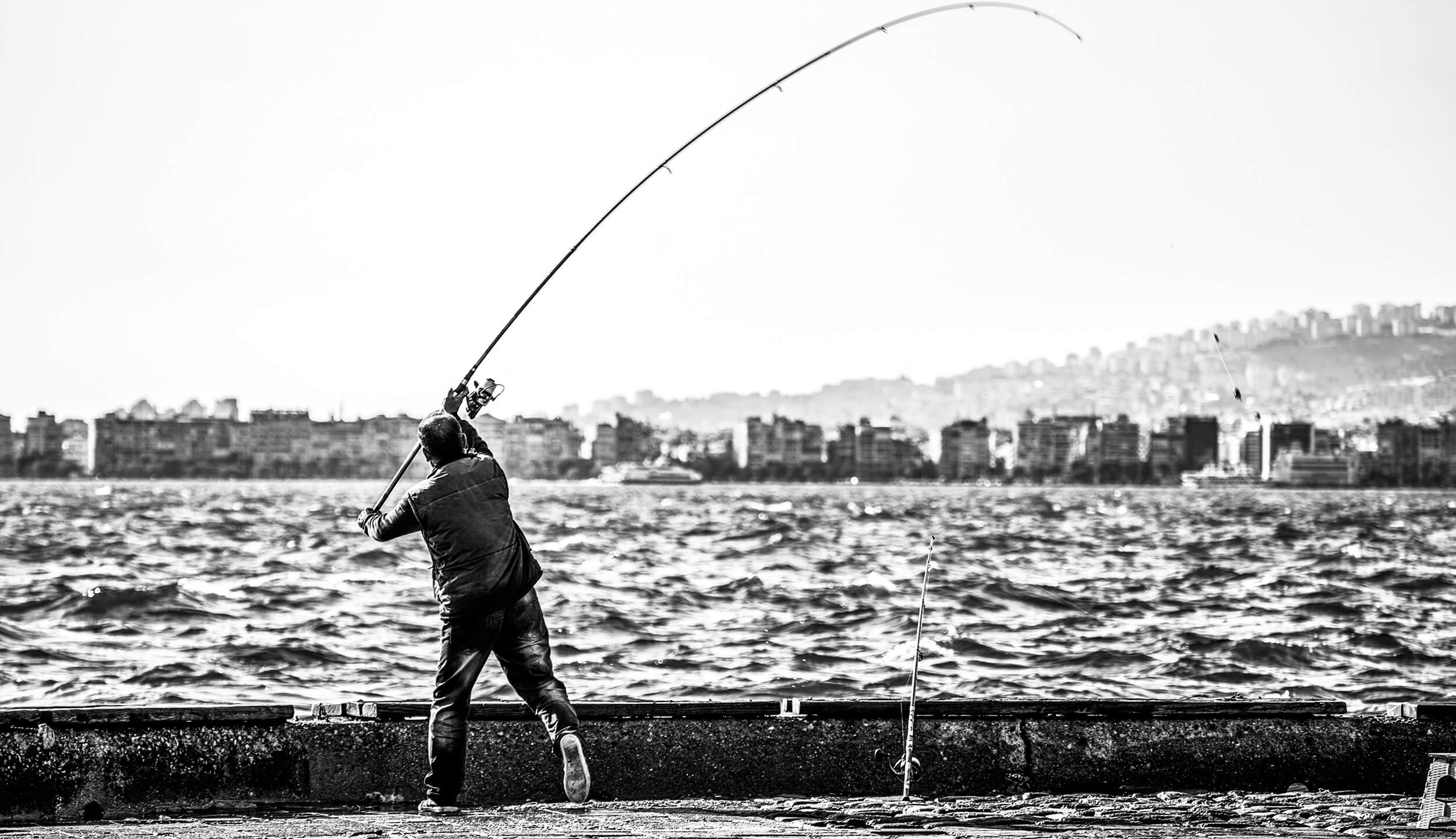
Side casting rightfully takes the second most common place after the vertical classic. Many anglers consider it a champion in range, and fans of ultralight use it almost more often than a “vertical”. And this is natural: when casting sideways, only one hand is involved, which is permissible for light tackle, and a heavy spinning rod does not particularly pounce in this way.
This method allows you to successfully fish under overhanging trees. The working hand is retracted to the side, the rod is directed to the side / slightly upward, and with a sharp movement, without a pause, is brought forward into the working position. When casting horizontally, a large overhang of the bait is usually set (up to a meter), but this parameter, as in the previous case, depends on the desired distance of bait delivery and the physiology of the angler.
Sighting from under the arm
This option is optimal when space is limited. It is rational to use it on small or very overgrown bodies of water, as well as when fishing from a boat. Its complexity can be assessed as average: not for a green beginner, but honed professionalism is not required.
When two spinning rods are located close to each other, you probably cannot think of a better option, since casting from under the arm does not require much space for a swing, the risk of being caught is minimal.
The movement algorithm is as follows:
- We place the rod horizontally towards the selected splash point of the bait. We set the overhang of the bait of the order of 40-50 cm.
- With an energetic movement, move the tip of the form to the side opposite to the working hand, slightly lowering it down. That is, the swing goes first towards the auxiliary hand.
- We return the form to a horizontal position in the opposite direction. We release the fixing finger at the moment of bringing the rod into working position.
This method allows you to put the bait as accurately as possible, however, it does not differ in high range.
Over the shoulder
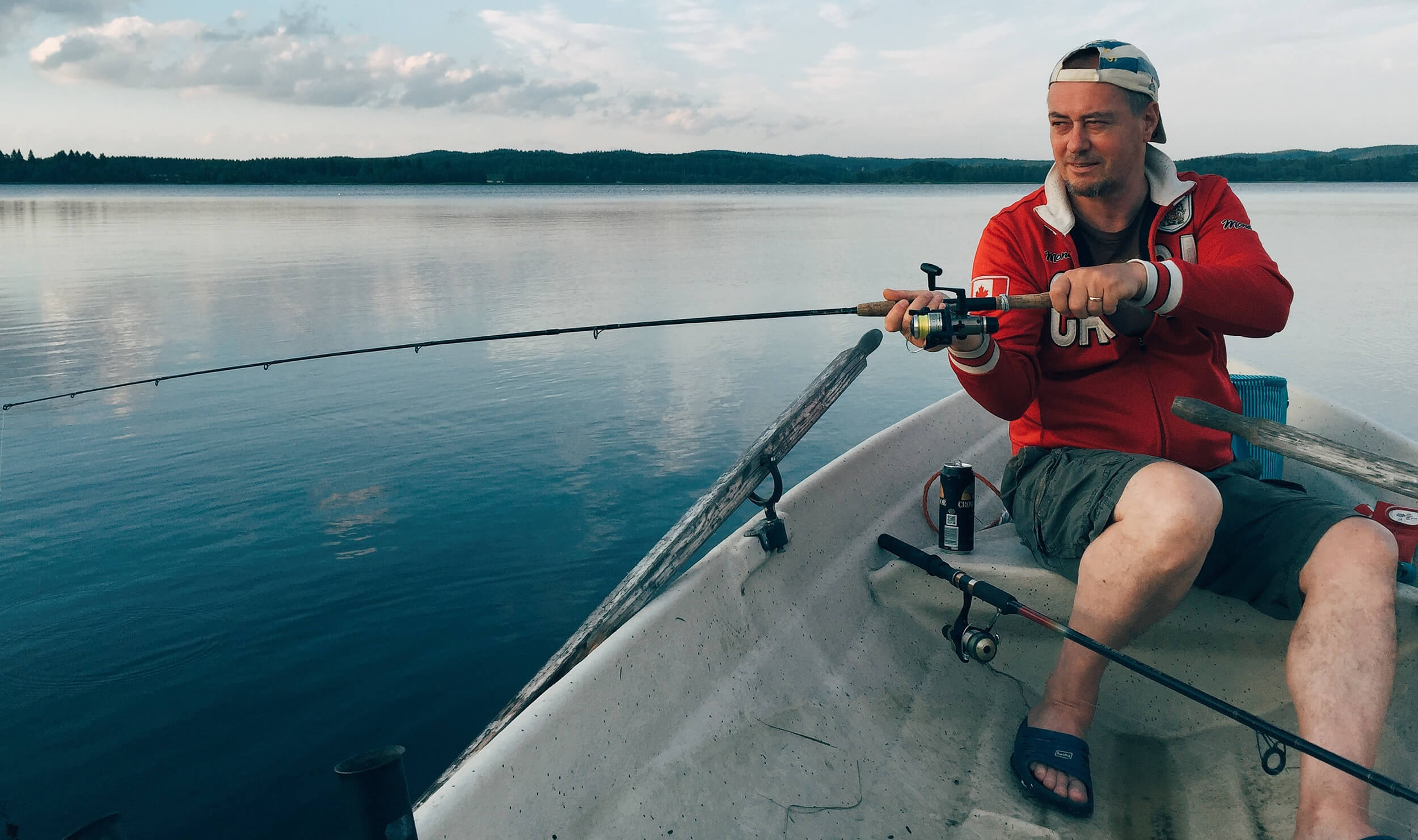
The over-the-shoulder method can be safely called power: the load on the tackle is very serious, therefore, the parameters of compliance of the rig with the casting of the rod are critical. Over-the-shoulder casting is performed with one or two hands, but it is more suitable for heavy spinning rods intended for trophy fishing. Therefore, it is performed less often with one hand: the auxiliary hand is on the handle below the reel seat.
Usually, the overhang of the bait is small – 15-20 cm, otherwise, with a lack of experience, you can catch yourself by the ear. The spinning rod is laid back, over the shoulder from above. In this case, the bait is located at a distance of about 30 cm from the ground. This is followed by a sharp forward swing, and the line must be released at the moment when the tip of the blank is directed upward. The bait usually flies far, but aiming will have to be worked out with training.
With two hands from behind the head
Another definitely power cast, most of all relevant for heavy-class gear. It is indispensable for the delivery of heavy pike wobblers and lures over long distances. The cast from behind the head is always performed with two bent arms. It requires a large amount of space behind the back, but bushes and trees can grow on the sides almost close – they will not interfere.
The blank is energetically wound behind the head on bent arms and is sharply sent forward. The locking finger is released immediately after the tip of the spinning rod crosses the highest point.
Pendulum
We have finished with the power methods, we move on to the options that require special equipment. These include the “pendulum” highly respected by professional spinning players, which allows you to send the bait aimingly into the densest support. After its development, you can fish complex “windows” surrounded by vegetation, deliver the bait close to snags and thickets – that is, to places where the predator is most likely to be. We are not talking about significant distances here, but the aiming is truly premium.
The pendulum can be used to cast lures of any class, but the heavier they are, the greater the range can be achieved, and an experienced angler can go beyond the spinning test (the load on the blank is small).
You need to act as follows:
- Set the middle (30-40 cm) overhang, open the arch of the forest holder, fix the line with your finger.
- Holding the rod in front of you, we swing the bait towards ourselves, performing a downward movement.
- With a sharp movement, we send the bait forward, release the line, releasing the finger.
Catapult
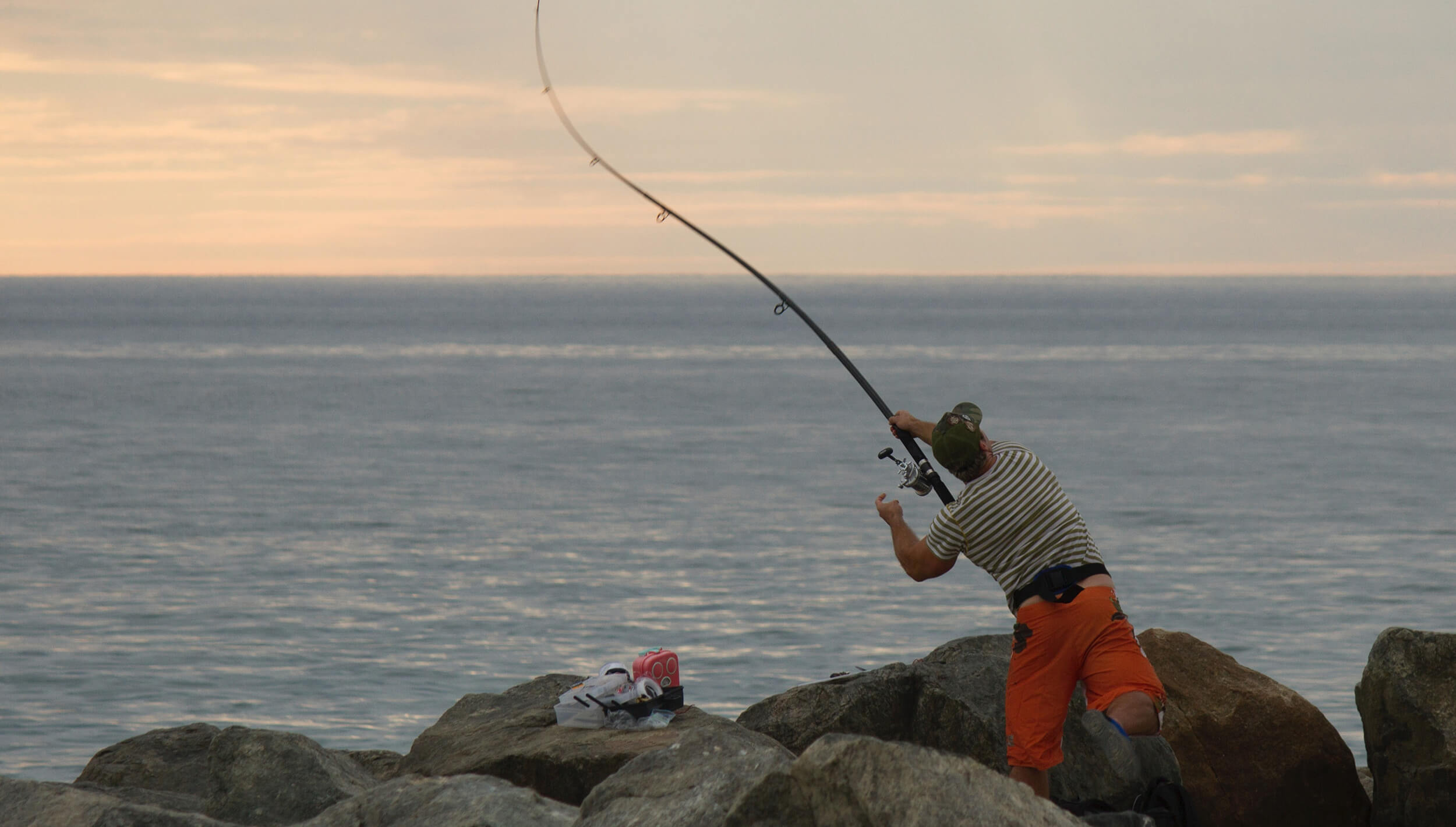
Before us is another interesting technique, apparently, which came to spinning fishing from fly fishing or from float fishing (features of both options are observed). Catapult casting is very difficult to perform and requires considerable skill from the angler. It is quite unpredictable, does not differ in long range, but allows you to fish in the most confined conditions.
This cast is the only one where the bait is held by the angler’s auxiliary hand, and you need to contrive to take it in such a way as not to catch on the hook during the departure phase. That is, you need excellent coordination, which is gained only during long training sessions. The angler takes a wobbler or lure in his auxiliary hand, pulling the line in such a way that the blank bends slightly. Then he makes a movement with the rod slightly upward, while simultaneously releasing the bait, which rushes forward due to the springy properties of the blank. The softer the spinning rod, the less likely it is to break.
Casting a spinning rod from a boat
Theoretically, you can cast tackle from a boat in the same way as from the shore, but only if the angler is alone in the boat. If there are two spinners, you need to take care not only of your own comfort, but also the safety of your neighbor. Side casting and the method from under the arm are definitely safer than the vertical one and all the options from behind the shoulder, head, and so on. You just need to make sure that the hooks do not get caught on the side of the boat.
However, it should be borne in mind that the boat is used mainly in order to gain access to promising places in the supports, thickets, and so on, so it is not the range that comes to the fore, but the sighting. Therefore, in such cases, spinningists usually use pendulum or ejection options.
Features of gear with a multiplier
In ordinary spinning fishing, the multiplier is unnecessary – it is needed only for the extraction of very large specimens for heavy tackle. A worthy multiplier reel is expensive, weighs a lot, and, if handled ineptly, instantly forms beards. In general, the multiplier is for the pros.
The main casting methods are as in the case of the inertialess one, lateral and vertical. However, the reel, like the spinning rings, is located upward, and the cast should be smoother and technically refined. Some experienced anglers even dismantle the tree layer and weaken the line as much as possible, which allows you to achieve truly fantastic distances. Most gear with a multiplier provide for the need to transfer them to the other hand immediately after splashing down the wobbler or spoon.
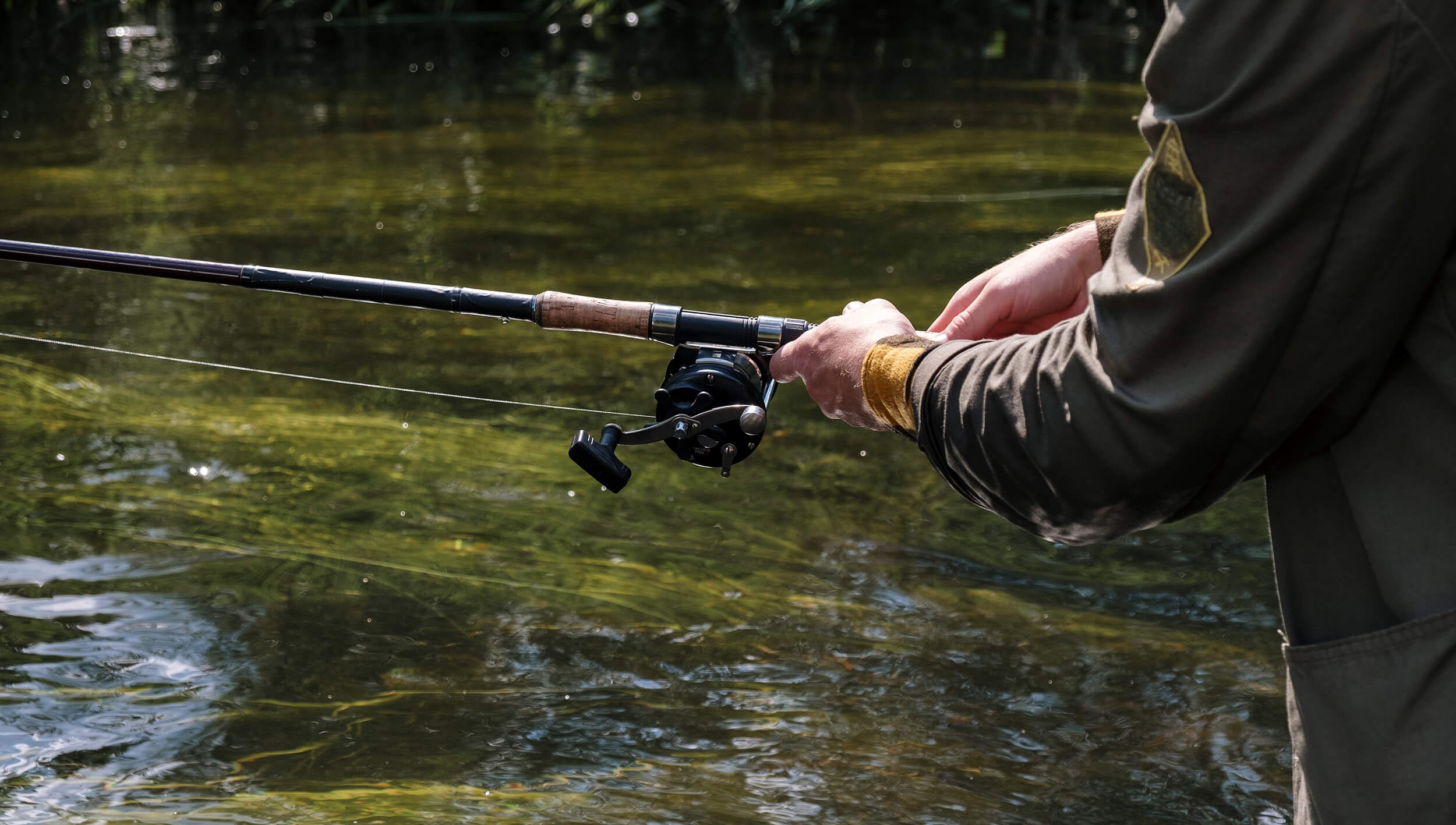
Bait position
In most cases, the bait is positioned freely (only in the case of the catapult version, it is clamped by hand). The classic size of the overhang (that is, the length of the fishing line from the “tulip” spinning rod) is 30-40 cm, but it can be increased or decreased depending on some factors:
- type of casting,
- characteristics of the form,
- flying qualities of the bait,
- wind conditions,
- individual preferences of the angler.
There is a single rule: the larger the overhang, the farther the bait will fly. However, due to this, accuracy will suffer, and the comfort of fishing will be poor.
Reducing the overhang reduces the load on the blank, which is important when using lures that go beyond the test characteristics of the rod. In addition, the targeting of the watering down of the bait increases.
Correct line fixation
When throwing in the spinning rod, the bow of the line layer opens, that is, without additional fixation, the cord or monofilament will come off the spool freely. Therefore, in the first phases of the movement, you have to use the finger of the working hand in order to fix the fishing line in some way.
On the other hand, you need to be ready to remove it at the moment of “shot”, otherwise the flight range will decrease. Moreover, when using heavy equipment, the risks of injury are high: monofilament cuts fingers especially well, but even with a cord in this situation, there is little pleasant. Therefore, we repeat the recommendation: at least at the training stage, wear a glove on the working hand.
Some spinning anglers in the first phase of casting press the line tightly against the side of the spool, but this method can be considered the most risky. Therefore, we recommend fixing the line near the rod, and not pressing it tightly, but only holding it with your finger. When “shooting” it is enough just to unbend your finger in time – and the line will be released, the bait will fly in the right direction.
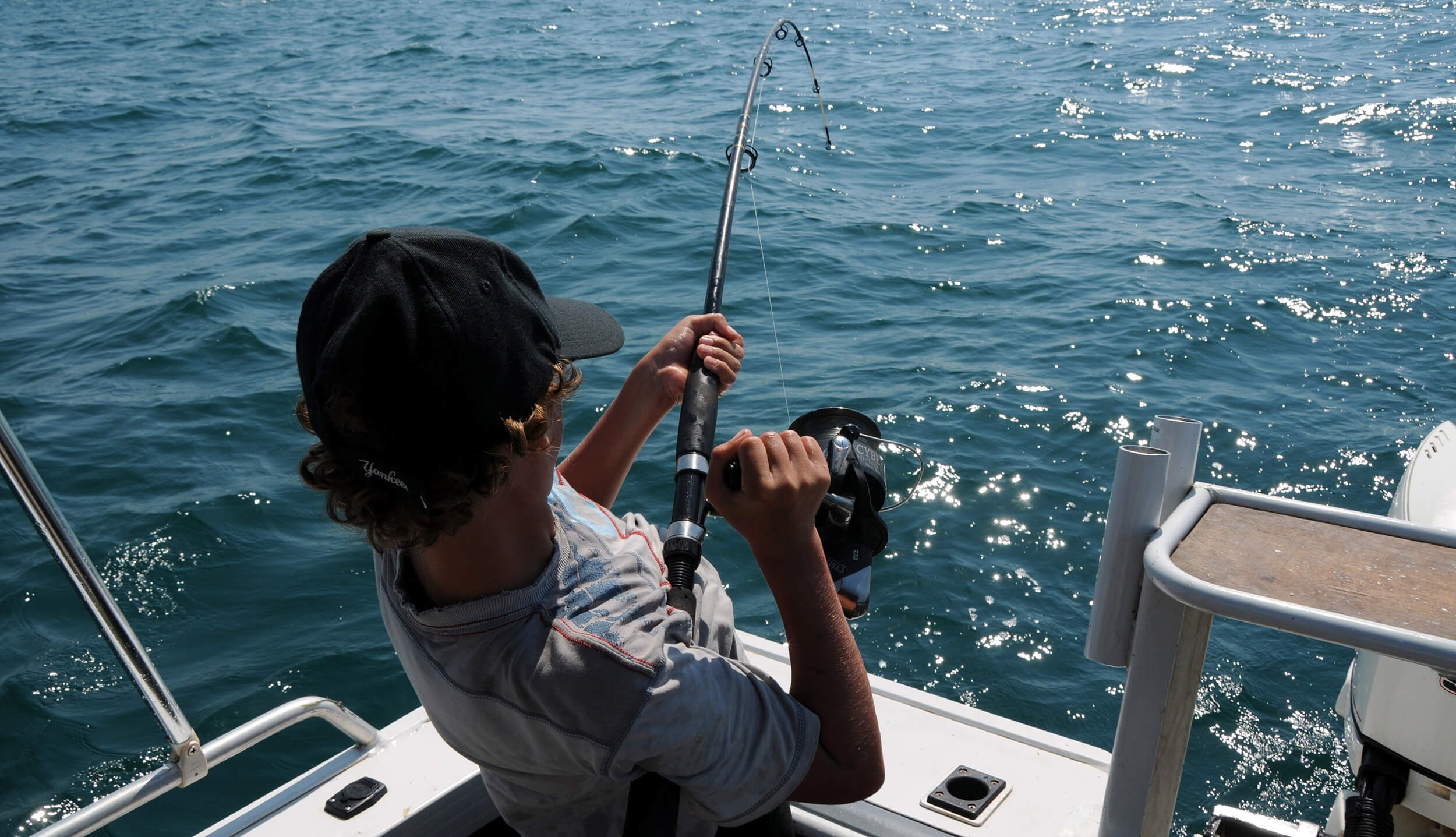
How to cast as accurately as possible
Oh, how nice it would be if the fish frolic in free water, away from snags and thickets! But, unfortunately, she does not think about the convenience of the angler, so she usually stands in the most inaccessible places, where there is a high risk of catching the tackle. For example, when hunting for a passive summer pike, you need to deliver the bait right under the nose of a predator sitting in a secluded corner of the reservoir.
It is clear that the greater the distance, the lower the aim of the throw. The best option for balancing range and accuracy is vertical casting, but only with sufficient experience of the spinning player. At short distances, the “out of hand” and “pendulum” methods allow putting the bait directly into the bullseye.
In all cases, one should not forget about the filigree setting of the tackle and the installation of a small (15-20 cm) overhang.
What affects the range
There are many factors affecting the range of the bait. Among them it is worth noting:
- Casting type . It is clear that with the power option, for example, from behind the head, the distance will be higher.
- Bait characteristics . In this case, not only the mass of the wobbler, spoon or jig head is taken into account, but also the aerodynamic properties.
- Test and action of the rod . Slow action blanks are theoretically longer-range. The ultralight can send the bait further than with a heavy rod.
- Wind conditions . This moment is especially critical when “throwing” light baits. You should also pay attention to the thickness of the line: the larger it is, the higher the windage and drift angle.
- Fisherman person . Both physical condition and spinning technique matter.
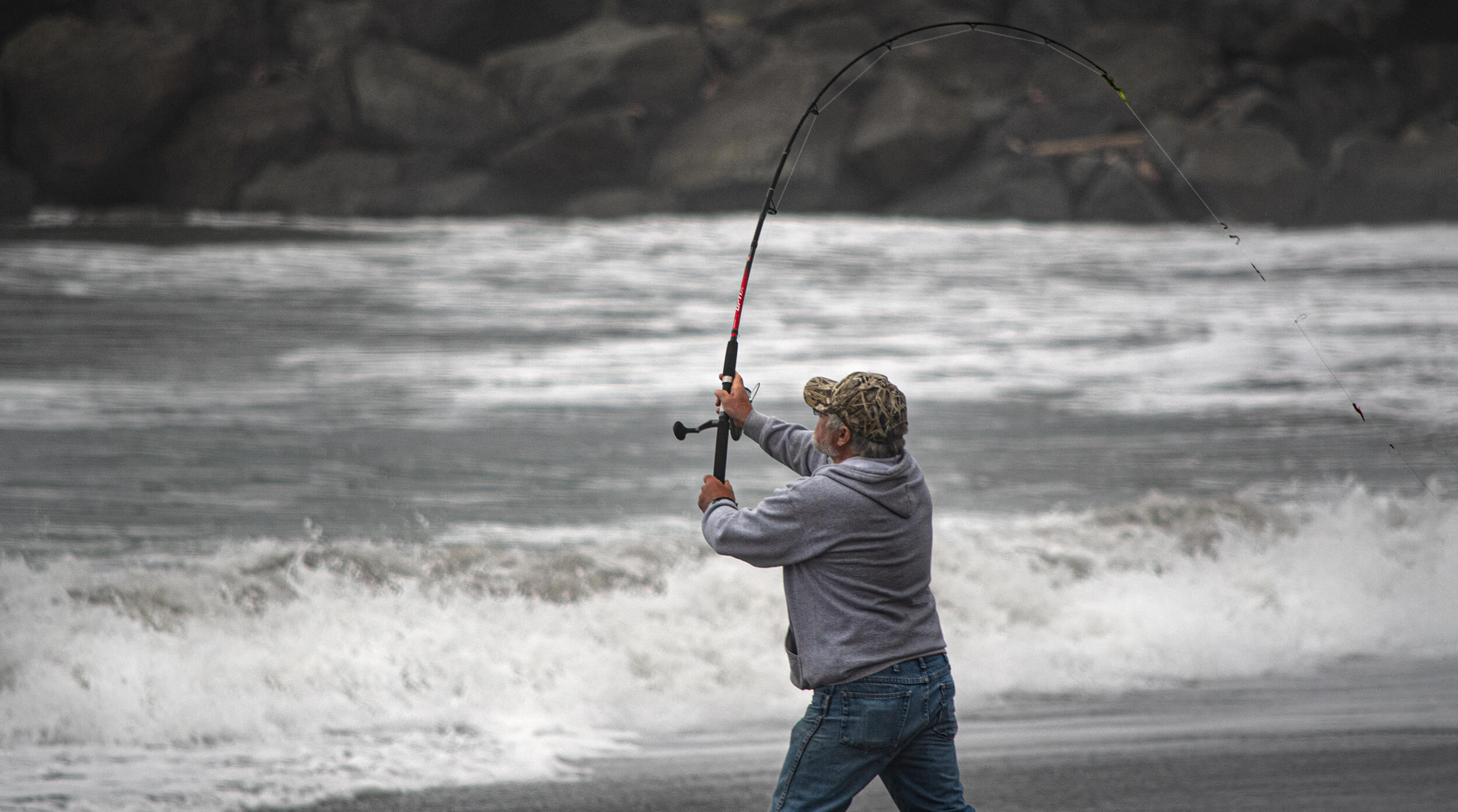
Typical mistakes
We have already mentioned most of the typical mistakes, it remains only to systematize them:
- Manipulations with the forestry . In the initial phase, the line manager must be open. This should be brought to automatism, otherwise, during power casting, you can part with the bait due to a break in the line, and in the worst case, break the spinning rod. After splashing down the bait, it is better to manually close the bow without waiting for automatic triggering when winding – this way the reel will last longer.
- Rod control . The angler must clearly understand what this or that manipulation will lead to. In the final phase, the rod should be positioned horizontally, at a slight angle to the direction of the line (depending on the current and wind conditions). No need to lift it up or try to position it exactly “on the line”!
- The hook of the rig for the “tulip” . When fishing for pike, a leash (metal, kevlar, fluorocarbon twist, and so on) is an obligatory element of the rig. In its absence, the predator will instantly bite the line. Sometimes, in the heat or due to inexperience, the leash is wound up close to the last ring of the spinning rod or even passed through it. The result is line breakage, premature ring wear and other “charms”.
- Hand position . Remember that the stem of the reel seat should be located between the index and middle fingers of the working hand. The line is fixed (slightly tightened) with the index finger. It must unbend clearly at the moment of the “shot”, otherwise the bait will go up, it will not fly far ahead, and the line will most likely get tangled. Release late – the distance will be reduced, you may injure your finger.
- Casting technique . The spinning rod is thrown in one motion, without fixation at the end points of the trajectory: take away – and immediately send it forward. There is no need to freeze in the extreme position: the message should be a single whole.
Tips for beginners
At the end of the post, let me give you some tips:
- Train in optimal conditions . It will not be possible to fish right away for sure, because the fish usually stands in hard-to-reach places where there is a high risk of being caught. Travel to a large body of water with minimal wind, throw the bait at a selected point in free water. At the same time, you will work out the wiring.
- Use someone else’s experience . No descriptions, photos or videos can replace real mentoring. It is ideal if during the first trips you will be accompanied by an experienced master who will help you deliver the equipment and prevent critical mistakes.
- Don’t go beyond the specs of the rod . At first, select the accessories only as part of the blank test. Later, when you become a pro, you can throw heavier baits with ultralights. And do not take blanks longer than 2.1-2.4 meters at first, even when fishing from the shore.
Good luck, novice spinners! Less annoying hooks, more enviable trophies and incredibly adrenaline impressions!

